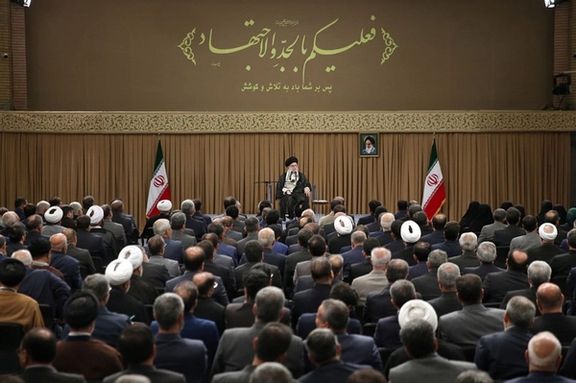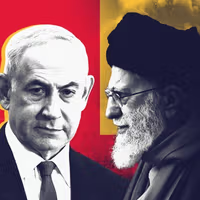Neither its reported logistical support for the October 7 attack by Hamas on Israel, the attacks by the Houthis on ships in the Red Sea, nor the launch of six thousand rockets by Hezbollah towards Israel from October 8th, 2023, can obscure this reality.
In 2024, serious questions have arisen regarding the government's authority, which is typically demonstrated through organizing government-sponsored gatherings, ensuring insider cohesion and cooperation, maintaining essential public services, and supporting internal forces.
The state’s waning influence to mobilize
On July 26, the state attempted to stage a celebration of the mandated Islamic hijab in Tehran’s Azadi Stadium, which has a capacity of one hundred thousand. Despite extensive promotion through government propaganda outlets and the provision of free entry, transportation, and amenities for attendees, over 70% of the seats remained empty. This event not only highlighted a significant lack of public interest but also exposed the government's diminishing power to politically mobilize and demonstrate popular support for its policies.
Following that, the Muharram mourning ceremony, which commemorates the martyrdom of the Islamic Imam Hussein, was notably uneventful this year despite being primarily funded by municipalities. Previously a ten-day event, it was reduced to just two days, with fewer mourning tents in populous neighborhoods and a significant drop in attendance.
Overall, the state’s heavy-handed enforcement of Islamic practices and suppression of the population have had a counterproductive effect. Mosques across Iran have become less frequented and have lost their sense of community connection. The latest official numbers indicate that at least two-thirds of the country's mosques (50,000 out of 75,000) have been closed, and the number of worshippers has significantly diminished.
A fractured executive branch
The administration of President Ebrahim Raisi had such a seemingly indefensible track record that, after his sudden death in a helicopter crash, Supreme Leader Ali Khamenei and his appointees in the Guardian Council allowed former Health Minister Masoud Pezeshkian and the “reformists” supporting him to enter the executive branch.
Despite the mistrust Khamenei almost certainly harbors for the “reformist” camp, he likely felt he had no choice but to turn back to them. He gave them enough room to campaign and reassured them with favorable statistics to encourage their participation in the executive branch.
This development unfolded while the chief editor of Kayhan, a newspaper under Khamenei’s direct management, described Pezeshkian’s colleagues in charge of selecting cabinet members as follows: "Most of the members of the Steering Council and its sub-committees are those who, in their records, are associated with the enemy's intelligence services, have security convictions, corruption, defense of homosexuality, disbelief in the system and revolution, alignment and association with the American, British and Israeli triangle, have been involved in seditions and riots, secretly meeting with the enemies of Iran in America and receiving instructions to create sedition in the country, [and] asking America to apply crippling sanctions against Islamic Iran.”
In his desperation to avoid another largely unpopular presidency, Khamenei has caused his once-unified executive branch to visibly fracture.
Infrastructure failures fuel growing discontent
The government’s failure to invest in and maintain infrastructure, coupled with inadequate public services, has heightened the risk of public protests. Issues such as power, water, and gas outages, along with potential increases in gasoline prices, have fueled growing discontent.
The number of power outages in the country, exceeding 50 per month, has now reached levels seen in failed and weak states such as Yemen and Niger.
According to Pezeshkian, gasoline imports have reached approximately $8 billion annually, a cost the government cannot sustain long-term without raising prices. Such increases could lead to public unrest similar to the November 2019 protests, where demonstrations over hiked fuel prices quickly turned into calls for regime change.
Rifts deepen in Khamenei’s top circles
In addition to other internal rifts, there have been notable internal conflicts within the top circles around the Supreme Leader.
One example of the internal tensions within Khamenei's inner circle is the July 8 edition of Jam Jam Daily. This newspaper, published by the state-owned TV and Radio Organization directly managed by the Leader, used Photoshop to remove Gholamhossein Mohseni Ejei and Mohammad Baqer Qalibaf—heads of the judiciary and legislative branches—from a photo of Pezeshkian’s approval ceremony in Khamenei's office.
Additionally, the support for Pezeshkian from several of Khamenei's close associates, such as his bodyguard Vahid Haqqanian, along with the early resignation of numerous IRGC members, signals a growing distance between the original leaders of the Islamic Republic and the regime's more hardline elements.










